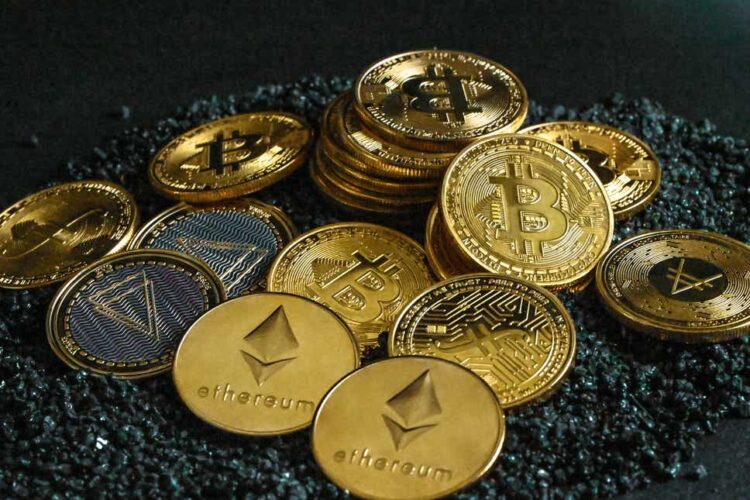Today, a lot of Web3 wallet apps are available for secure digital asset storage. So, let’s find out what guarantees their safety, where it’s better to store tokens, and which ones are better for holding a variety of assets.
Web3 is the third-generation concept of the Internet which is more advanced than Web2 and Web1. It differs in its focus on the introduction of decentralized blockchains and cryptocurrency on the Internet. That is, Web3 aims to create an independent and transparent financial ecosystem where anyone can be a buyer and a seller and transactions are conducted without intermediaries. Web3 aims to ensure that all platforms are controlled by the community of users.
Web3 also focuses on security, privacy, machine learning, and artificial intelligence.
What a Web3 Wallet is and How It Differs From Traditional Wallets

A Web3 wallet is needed to access the Web3 space and cryptocurrency. It’s almost the same as more traditional wallets, but it has more features. Both tools allow owners to send, receive, and store assets with almost no restrictions, have user-friendly interfaces, and offer a high level of security, as well as hot and cold storage features.
There are many common features, but it’s still wrong to call a Web3 wallet just a cryptocurrency one. While a cryptocurrency wallet can only be used to store cryptocurrencies, the Web3 wallet is designed to work with cryptocurrency, NFT tokens, and other digital assets. With the Web3 wallet, you can keep intangible assets under control and work with decentralized finances.
How to Create a Web3 Wallet
The first step in creating a wallet is registering on the platform and obtaining a private key or sid-phrase. This data is unique and cannot be changed, so ensure you won’t lose it.
All popular apps have quite similar interfaces: as soon as you enter the wallet, you will see all the assets that are placed in it. Here you can send or receive digital assets from other wallets, connect to a blockchain or trading platform, and acquire digital assets.
Types of Web3 Wallets: Software, Hardware, and Paper Wallets

Cold Wallets
They are designed to store digital assets offline when not in use. This option is recommended for those who frequently sell and buy assets, as well as for long-term investors who trade less frequently. By keeping the wallet inactive most of the time, it is less susceptible to fraud and hacker attacks.
Hardware Wallets
That’s the most well-known version. It stores digital assets on an external device, usually a USB flash drive. When you need to use the wallet, you connect the flash drive to your computer or laptop. The small size and resemblance to a flash drive are both an advantage and a disadvantage of a hardware wallet: an inconspicuous appearance doesn’t attract pickpockets, but it’s still easy to lose such an item. No one can steal assets without a PIN code, a private key, or a seed phrase. However, you, most likely, will not be able to restore the device if you lose it.
Paper Wallets
These are documents with a unique code. Such wallets are usually generated and kept in a safe until sold.
Creating a paper wallet will first require selecting a reliable wallet generator and generating private keys with it. Such tools are usually open-source, so carefully research the reviews for the one you will be using.
Software Wallets
A software wallet is always connected to the Internet and works like the most versatile banking apps. You can sell assets and deposit funds to buy NFT or cryptocurrency through an app on your smartphone or browser, which is more convenient than with the cold version.
Most cryptocurrency wallet platforms ensure compatibility and promise security, but the constant connection of assets to the Internet makes them more vulnerable to hacker attacks.
Browser Wallets
They look like a web browser and are an extension for it. They allow you to connect to decentralized apps on various blockchains through a browser.
Desktop Wallets
They allow you to buy, sell, trade, and earn on digital assets through a computer program.
Mobile Wallets
As the name implies, working with digital assets takes place directly in the app on your smartphone.
Benefits of Using Web3 Wallets: Security, Privacy, and Accessibility

Web3 wallets have lots of advantages:
- Accessibility. Developers of both hot and cold wallets are interested in improving user experience. The interface of any among the top wallets will allow you to set up an account and start trading assets within minutes with no technical knowledge.
- Scalability. It is a Web3 network’s ability to operate with a huge number of transactions per second (TPS) securely and effectively.
- Anonymity and no centralized governance. Sending crypto assets leaves no paper or digital trail. If you need to transfer a sold asset, you will only need to enter your wallet address, without any other personal information. The Web3 marketplace is decentralized, which means that while many wallets are created and stored by third parties, control over where and how many assets you invest, sell, buy, and send is entirely in your hands.
- Security. Without private keys, hackers can’t access hot wallets, and without the medium, they can’t access cold ones.
After all, the emergence of Web3 and innovations along with it look like an opening for getting some kind of virtual security and protection of their data. It’s kind of an attempt to build a new world between the financial system and people, as well as their interactions with each other. All these ensure mainstream adoption of Web3 wallets.
 Hi Boox Popular Magazine 2024
Hi Boox Popular Magazine 2024



